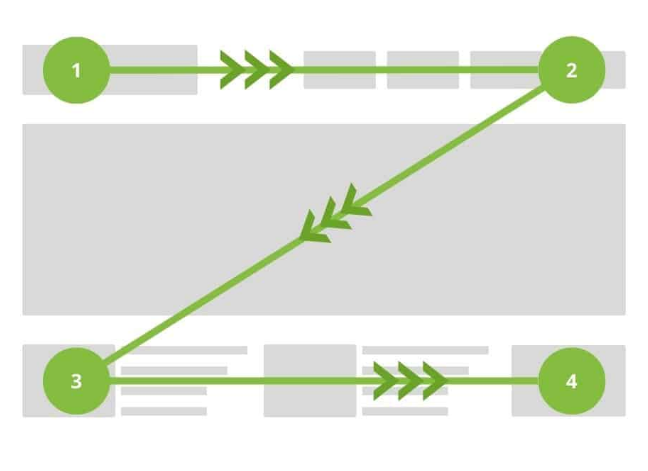
Did you know that, on average, only 22% of agencies are satisfied with their conversion rates? That means almost 80% of paid media budgets could be under-leveraged. Before you invest more money into advertising, opt for investing in what happens after the click.
In this blog, we’ll explore three core CRO principles and explain how each can supercharge your paid media performance.
Why CRO Should Come Before Scaling Ad Spend
Ramping up ad spend without first improving on-site performance is like expanding a leaky bucket. You might pour in more water, but the leaks remain. Through fixing those leaks first, every extra click you purchase delivers more value.
These are some disadvantages of not investing in CRO:
- Cost per acquisition (CPA) often balloons when conversion rates stay low.
- You miss opportunities to learn from real user behaviour.
- You may overcommit your budget to under-performing channels.
Addressing these gaps through systematic CRO, every dollar of your paid media spend will drive more qualified actions, turning existing traffic into a scalable, revenue-generating engine.
Core CRO Pillars That Elevate Paid Media
In this section, we break down each CRO pillar into a standalone deep dive to help agencies optimise post-click performance and boost ROI.
1. Landing Page Optimisation
A landing page must feel like a seamless extension of your ad creative. Use a Z-pattern layout so headlines and images land where users naturally scan. Mirror your ad’s value proposition in the headline, then back it up with a concise subhead and supportive visuals above the fold.

This layout style is used by several large websites as it takes advantage of a user’s predictable reading behaviour. Each point of the Z-layout is broken down into the following:
- Top-Left (Entry Point)
- Your logo or brand mark for instant recognition
- A concise, ad-matched headline that echoes the click promise
- Top-Right (Visual Hook)
- A hero image or short looping video that illustrates the offer
- Subhead or 1–2 supporting words reinforcing the main benefit
- Bottom-Left (Supporting Details)
- 3–5 quick-scan bullet points or icons outlining core features
- A testimonial snippet or trust badge to build credibility
- Bottom-Right (Conversion Zone)
- The primary CTA button in a contrasting colour
- Secondary trust signals (security seals, money-back guarantee)
Through placing these elements at each Z-point, you lead the eye from brand promise to visual engagement, through proof, and finally to action, maximising both clarity and conversion.
2. Call-to-Action (CTA) Optimisation
Call-to-Action is the final push that turns intent into action. Focus on high-contrast button colours to ensure that the CTA can stand out from the website’s overall design. Beyond the size and colour of the CTA, enhance engagement with micro-interactions such as subtle hover transitions or brief click animations.
Below are a few examples of CTA’s and interactive features you can add:

Through fine-tuning each element of your CTA, you create a powerful conversion lever that amplifies every dollar spent on paid media.
3. Mobile Responsiveness
More than 60% of web traffic in 2025 comes from mobile devices. Ensuring your site adapts seamlessly to smartphones and tablets isn’t just optional, it’s essential for capturing a majority of users and maximising engagement and conversions.
These are steps you can include to improve mobile responsiveness:
- Viewport Configuration:
- Include meta viewport tag on every page
- Preserve pinch-to-zoom for accessibility; avoid disabling user scaling unless there’s a critical design reason.
- Fluid Grids and Breakpoints:
- Adopt a percentage-based grid so columns expand and contract together.
- Define breakpoints based on your analytics data. Common ranges include 320px, 480px, 768px, and 1024px.
- At each breakpoint, adjust column counts, font sizes, and spacing to maintain readability and visual hierarchy.
- Touch-Friendly Design:
- Ensure tap targets are at least 44 × 44px with 10 to 15px padding to prevent mis-taps.
- Space buttons, links, and form fields generously so thumbs can navigate without frustration.
- Replace hover-only interactions with clear pressed or active states that work on touchscreens.
- Performance Optimisation
- Minify and bundle CSS and JavaScript; defer non-critical assets below the fold.
- Use a Content Delivery Network (CDN) and set up proper caching headers.
- Aim for a Largest Contentful Paint (LCP) under 2.5 seconds, even on 3G network simulations.
- Testing and Continuous Monitoring
- Test on real devices (iOS and Android) across your key screen sizes.
- Use browser DevTools’ device emulation with throttled network settings for rapid checks.
- Schedule regular audits with PageSpeed Insights and track Core Web Vitals in your analytics dashboard.
Through prioritising fluid layouts, touch-first interactions, and lean performance, you’ll deliver a seamless mobile experience that reduces bounce rates, boosts SEO, and converts more of the on-the-go audience.
Future Insights into CRO
The recent changes in technology and AI tools have also affected traditional CRO methodologies. Agencies can no longer rely on static frameworks and manual tests alone. The next frontier combines machine learning and automated workflows to optimise every visitor interaction.
Recent breakthroughs in AI-driven personalisation, predictive modelling, and continuous auditing are rewriting the CRO playbook. Agencies no longer compete on manual tests alone as you must layer machine learning and automated workflows into every post-click experience. This helps drive faster insights and a more robust service offering.
Landing Page Optimisation
AI engines are transforming how landing pages adapt to individual users. Instead of one-size-fits-all templates, component libraries driven by real-time signals assemble custom layouts on the fly.
Where the future is heading:
- Personalisation models that swap headlines, imagery, and trust elements based on referral source or browsing history
- Dynamic content frameworks that reflow sections (features, testimonials, CTAs) to mirror each user’s scroll behaviour
- Conversational micro-experiences powered by chatbots that pre-qualify visitors before exposing main offers
Flexible, testable landing page frameworks are no longer optional. They allow agencies to scale improvements quickly and maximise ROI on the fly.
Call-to-Action (CTA) Optimisation
Predictive testing tools forecast CTA variations before enough live traffic accumulates, delivering faster results and less wasted budget.
Where the future is heading:
- Predictive modelling engines simulate which copy, color, and placement combos will drive the highest click-through rates based on historical data.
- Automated micro-variation generators spin out dozens of button-text, style, and interaction permutations for rapid iteration
- Progressive engagement CTAs (instant-quote calculators, mini-surveys) warm up prospects with low-friction asks before exposing the primary conversion action
Through pairing predictive CRO tools with real-time testing, marketers validate what works in weeks instead of months. This safeguards budgets and proves ROI in the short term, which is critical for client and stakeholder confidence.
Mobile Responsiveness
Mobile CRO is shifting from “make it look good on small screens” to a retention strategy. A clunky mobile flow doesn’t just waste ad spend; it erodes trust and accelerates churn. Forward-looking teams are adopting mobile-first audit frameworks that continuously flag performance gaps before they impact campaigns.
Where the future is heading:
- Continuous mobile-first audits that detect UX friction, Core Web Vitals dips, and accessibility barriers on real devices
- Adaptive layout engines that reflow content modules based on aggregated device-usage patterns instead of fixed breakpoints
- Intelligent caching and PWA enhancements that sustain engagement during offline or low-connectivity sessions
Treating mobile-first CRO as a growth and retention lever ensures consistency across devices, strengthens trust, and extends the lifetime value of campaigns.
Future-Proof Your Ad Budget with CRO
CRO isn’t just a simple list of items to validate. It’s the beating heart of your growth plan. When you blend time-tested optimisation techniques with exciting new tools like AI-powered personalisation and predictive testing, you’re not only lifting conversions today but you’re also building resilience into your ad budget, no matter how costs or market uncertainty shift.
Your next steps
Optimising paid media ROI with a CRO-first mindset starts with a clear plan and the right partners.
As a white label agency, we specialise in post-click performance, fine-tuning landing pages, CTAs, and mobile experiences to squeeze every last drop of value from your ad spend.
Ready to turn more clicks into customers? Reach out and let’s power your paid media growth together.
Related Articles
Why Choose Us?
With decades of experience and a dedicated team, we are committed to delivering high-quality web development services. Our client-centric approach ensures that we understand your needs and provide solutions that exceed your expectations.








